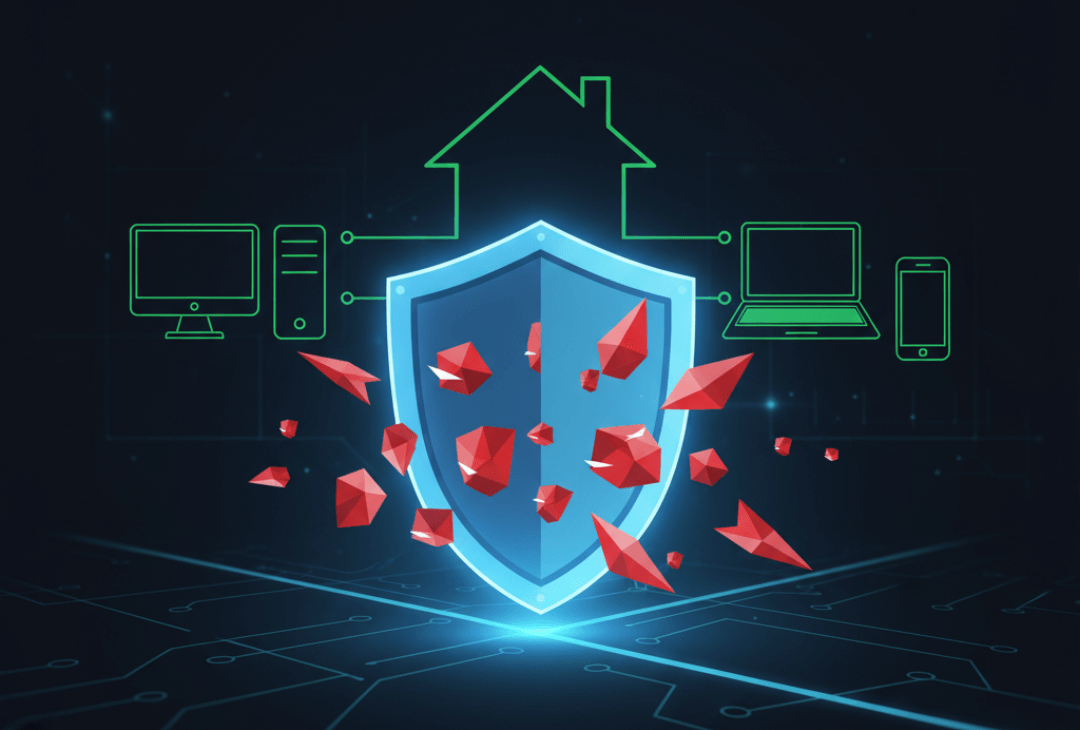Are you looking for a simple, yet powerful way to stop cyber threats before they even knock on your network’s door?
If you want to ensure your entire network is instantly protected against the vast majority of web-based attacks, you need to understand the power of DNS Shield. Every time you connect online, the very first step is a Domain Name System (DNS) lookup. This crucial step is the most vulnerable point of entry for threats, but thankfully, this technology provides an easy fix.
What is This “Shield,” Anyway?
Forget complicated acronyms for a moment. A DNS Shield is essentially a smarter, tougher phonebook.
Instead of using the standard DNS service provided by your internet provider (which is usually fast but totally unprotected), you configure your devices (or, more commonly, your router) to use a special, secure DNS service. In short, this is your way of outsourcing threat detection.
When you try to go to a website, the process looks like this:
- You Click: Your device asks the DNS Shield service: “What is the address for
shady-malware-site.com?” - The Shield Checks: The secure DNS service checks that domain name against a colossal, constantly updated blacklist of known bad actors (phishing, viruses, ransomware, etc.). As a result, it leverages real-time threat intelligence to make a decision instantly.
- The Verdict:
- Good Domain? It hands over the correct IP address. Carry on!
- Bad Domain? It simply replies, “That address does not exist.”
The browser never connects. The malware never downloads. The phishing page never loads. Consequently, the attack is stopped before a single packet of malicious data touches your computer. It’s beautifully simple and incredibly effective. Furthermore, many providers offer services like DNS over HTTPS (DoH) to encrypt this lookup for added privacy.
🎯 The Three Ways a DNS Shield Saves Your Day
This solution doesn’t just block viruses; it enhances your entire digital life in critical ways:
1. The Preemptive Strike against Phishing
You’re human, and you’re busy. We all click a suspicious link occasionally. If, for instance, you accidentally click a link to a fake login page, the DNS Shield recognizes the domain as a known phishing attempt and blocks it, displaying a harmless warning page instead. Ultimately, it’s like having an editor review your clicks before they go live.
2. Stopping the C&C Call-Home
Imagine a piece of malware is already on a device (say, an employee’s laptop). That malware’s next step is often to “call home” (Command and Control or C&C) to an attacker’s server to download its payload or exfiltrate data. However, the DNS Shield blocks this critical communication step, effectively crippling the malware and preventing a full-blown incident. In essence, it isolates the infected machine.
3. Giving You Control (and Privacy)
Moreover, most DNS Shield services allow for content filtering. If you’re a parent or a business owner, you can block entire categories like adult content or excessive social media usage with a single click at the network level. In addition, using a reputable DNS Shield means your browsing habits are kept private from your ISP and other snoops.
🌐 Beyond the Firewall: Why Both are Essential
Many people ask, “Doesn’t my firewall do this?”
The answer is: Not exactly, and not fast enough.
Your firewall is brilliant at controlling the type of traffic (e.g., blocking certain applications or ports), but it often acts after the domain-to-IP resolution has already occurred. On the other hand, the DNS Shield operates at the foundational level—it prevents the address from being resolved in the first place.
Think of it as having two guards:
- DNS Shield: The guard at the gate who checks the visitor’s name against a global “wanted” list. If the name is on the list, the visitor is instantly denied entry.
- Firewall: The guard inside who checks every piece of luggage and makes sure visitors are only using approved rooms and services.
Together, they create a much stronger defense than either one could alone. For instance, you can configure a firewall to block an IP, but the DNS Shield blocks the domain, which is superior since attackers often change IPs.
💡 Ready to Implement Your Shield?
The best part about DNS Shield technology is its simplicity. To begin with, for most homes and small businesses, it’s a matter of logging into your Wi-Fi router and changing the two DNS server addresses to a service like Quad9 or Cisco Umbrella. For enterprises, the solution scales beautifully, integrating with existing systems to provide granular control and forensic logging.
Stop playing defense against threats that are already inside the building. Give your network the smart, silent bodyguard it deserves, and block threats right at the internet’s front door.
Last modified: October 23, 2025



